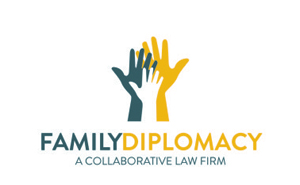The 4 Phases of Collaborative Divorce
Embarking on a journey toward resolution of your divorce can be a daunting task, especially when faced with challenging family matters. Collaborative Divorce offers a unique approach that emphasizes cooperation and mutual understanding. In this blog post, we’ll delve into the four essential phases of Collaborative Divorce, also known as the 4 D’s of Resolution, to guide you through the Collaborative Process.
1. Decide to Enter the Collaborative Process
A. Understand what is required of you: The first step in any Collaborative Matter is to grasp the expectations. Familiarize yourself with the Collaborative Process, its principles, and the commitment it demands. It is also important to understand that your attorneys and other professional team members are only there for the purpose of reaching an out-of-court agreement, and all of the professionals are disqualified from ever engaging in contested court battles.
B. Review and sign the Participation Agreement: Formalize your commitment by reviewing and signing the Collaborative Participation Agreement. This document outlines the rules and guidelines, ensuring that you and your spouse are both on the same page. This is also the document that, once signed, formally commences the Collaborative Process.
C. Commit to the Process: Collaborative Practice works best when both spouses are committed to reaching a resolution. Make a conscious decision to fully engage in the process, recognizing that cooperation and open communication are key elements in reaching a resolution.
2. Disclose all Relevant Information
A. Decide what information is needed: Transparency is a cornerstone of Collaborative Practice. Your professional team will help you determine the financial and other disclosure that you and your spouse will need to make informed decisions later on.
B. Assign information gatherer(s): Delegating responsibilities is an integral part of Collaboration. Assign individuals to gather the necessary information, fostering a sense of shared responsibility. Some of the information may be gathered by a Neutral Financial Professional, and other information will be gathered by the spouse that has the best access to that information.
C. Review shared information: Once gathered, you will thoroughly review the shared information. This step sets the stage for open discussions and helps in understanding the full scope of the situation. As oftentimes one spouse knows a lot more about the family finances than the other spouse, this step helps put the spouses closer to equal footing so they are working off the same information.
D. Work through differences: Differences are inevitable, but Collaborative Divorce is about overcoming them. You will work through any disparities in the shared information. Your professional team can help identify what additional information is needed, including what types of appraisals or valuations may be helpful to help bridge any differences in understanding.
3. Develop Options that Meet Interests
A. Identify interests: If not already done, your Collaborative Facilitator will help you identify your and your spouse’s interests (what is important to you), and we will keep coming back to those interests. Understanding what is important to each spouse is crucial for generating effective solutions.
B. Brainstorm options – No Judgment: Collaborative Divorce encourages judgment-free brainstorming. Every idea is a potential solution or may lead to a potential solution in the Collaborative Process, and this stage is about exploring various possibilities.
C. Discuss probable outcomes of each option: At this stage, you will evaluate the potential outcomes of each option. Consider the implications for you, your spouse, your children, and others important to you.
4. Determine Best Options for Your Family
A. Compare expected outcomes of each option to clients’ stated goals: It is important to think not only about how the options meet your interests, but also how they meet the interests of your spouse and children (if any). This will help to create not just a settlement, but a durable agreement that positively restructures your family.
B. Eliminate options that do not sufficiently meet important goals of either client: Streamline the choices by eliminating options that fall short of meeting crucial goals. Focus on solutions that truly address both clients’ needs.
C. Narrow the options to those that meet the most important goals of both clients: Prioritize options that align with the most critical goals shared by both clients. This step refines the choices to those that have the highest potential for success.
D. Jointly determine the options that most closely meet the most important goals of both clients: Collaboration is about joint decision-making. Work together to finalize the options that best align with the essential goals of all parties involved.
E. Put agreed-upon options in writing: This is the stage where your Collaborative Lawyers will draft up a Collaborative Marital Resolution Agreement for you and your spouse to sign. This written agreement serves as a blueprint for moving forward and provides clarity and accountability. Once signed, your Collaborative Lawyers will draft up all the remaining documents needed for your divorce and will represent you at an uncontested final hearing and to conclusion.
In embracing the 4 D’s of Resolution, you empower yourself to navigate the Collaborative Divorce Process effectively, fostering a path toward resolution that is both comprehensive and mutually beneficial.
Adam B. Cordover is co-editor and co-author of an American Bar Association book on Collaborative Practice. He is one of the most experienced Collaborative Lawyers in Florida, and he has taught judges and divorce professionals throughout the United States, Canada, Israel, France, and Brazil and beyond about the Collaborative Process.





